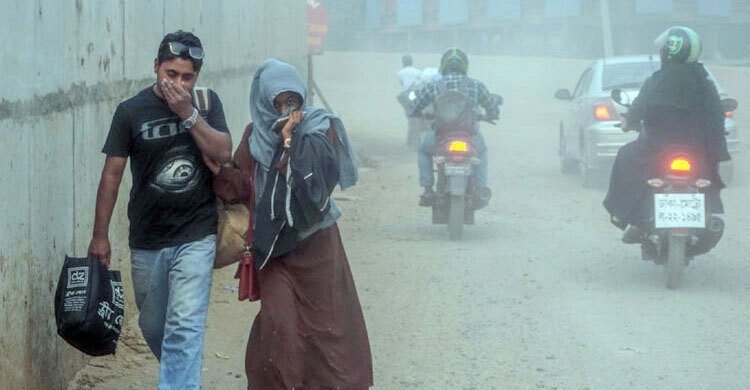Dhaka Office: A newly released report from the Health Effects Institute (HEI), in partnership with UNICEF, reveals alarming trends in air quality both in Bangladesh and worldwide, posing significant health risks.
According to the latest State of Global Air (SoGA) 2024 report, countries in South Asia, as well as East, West, Central, and Southern Africa, experience the highest burden of disease linked to air pollution. In 2021 alone, air pollution was responsible for over 235,000 deaths in Bangladesh, highlighting a significant public health challenge.
The report finds that children under five years old are especially vulnerable, with health effects including premature birth, low birth weight, asthma, and lung diseases.
In several countries in Africa and in Asia, including Bangladesh, more than 40% of all deaths from lower-respiratory-tract infections in children under five are attribute to air pollution. In 2021, Bangladesh recorded over 19,000 deaths of children under five due to air pollution-related conditions.
In 2021, exposure to air pollution globally was linked to more than 700,000 deaths of children under five years old, making it the second-leading risk factor for death globally for this age group, after malnutrition. A staggering 500,000 of these child deaths were linked to household air pollution due to cooking indoors with polluting fuels, mostly in Africa and Asia.
Sheldon Yett, UNICEF Representative to Bangladesh, emphasizes the urgent need for action, stating, “The health of millions, particularly children, is at stake. Children are the most vulnerable to the detriments of poor air quality, suffering from diseases such as asthma and pneumonia. It is critical that we implement sustainable solutions to improve air quality not just for the health of our children today, but for future generations.”
The report also highlighted that Bangladesh experiences significant ozone exposure, contributing to air pollution-related diseases. In 2021, nearly 50% of all ozone-related Chronic Obstructive Pulmonary Disorder (COPD) deaths globally occurred in India (237,000 deaths), followed by China (125,600 deaths) and Bangladesh (15,000 deaths).
The report describes in detail the important health impacts of air pollution in children. They are uniquely vulnerable, and the damage from air pollution can start in the womb with health effects that can last a lifetime. Children inhale more air per kilogram of body weight and absorb more pollutants relative to adults, while their lungs, bodies, and brains are still developing.
The burden of air pollution-related diseases is not borne equally across the world. While the contribution of air pollution to ischemic heart disease is 28% on average globally, this ranges from less than 10% in high-income countries such as Finland, Norway, Australia, and Canada to more than 40% in countries in East, West, Central, and Southern Africa, and South Asia (including Nigeria, Kenya, Rwanda, and Bangladesh).
This year’s SoGA report serves as a stark reminder of the health implications of air pollution and the urgent need for concerted efforts to address this global health crisis.
As countries around the world strive to enhance public health policies, Bangladesh faces a crucial challenge in tackling air pollution to safeguard the health of its population, especially its younger generations.

